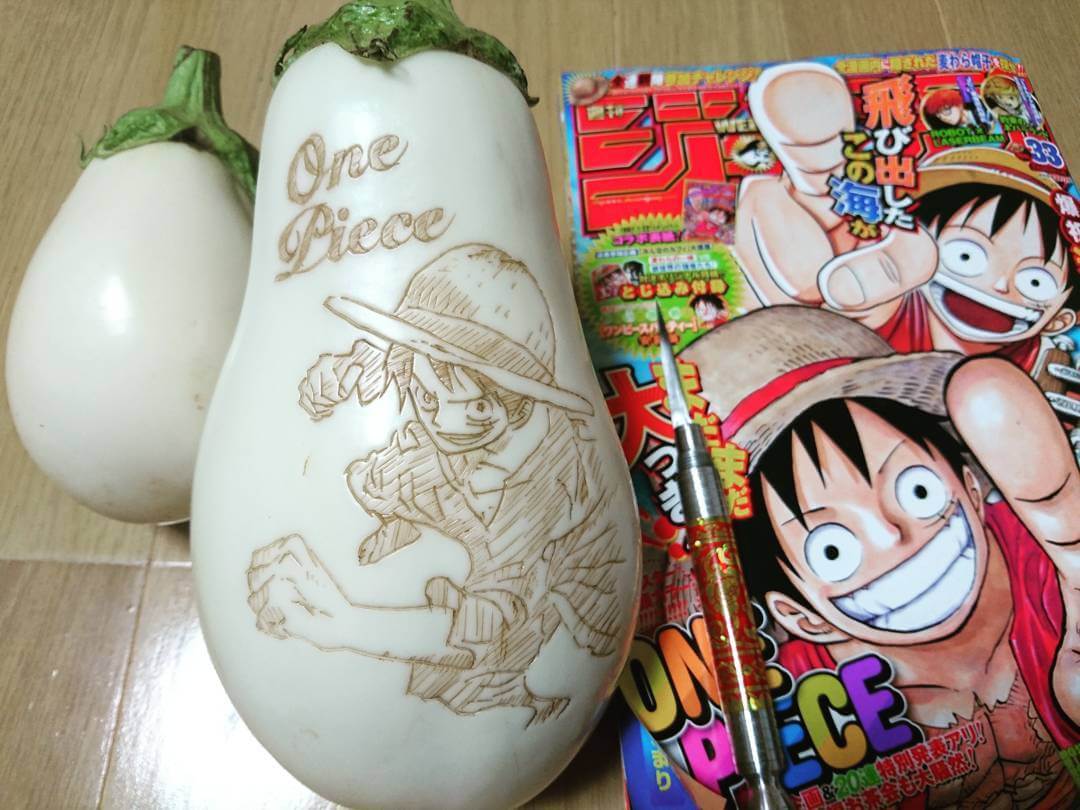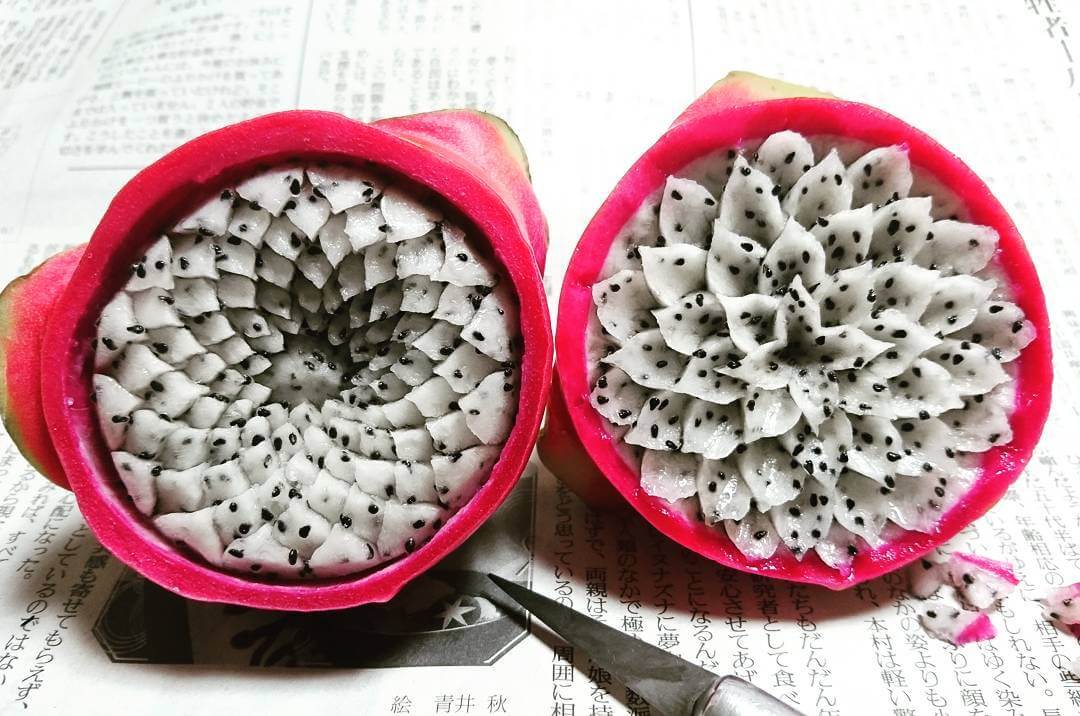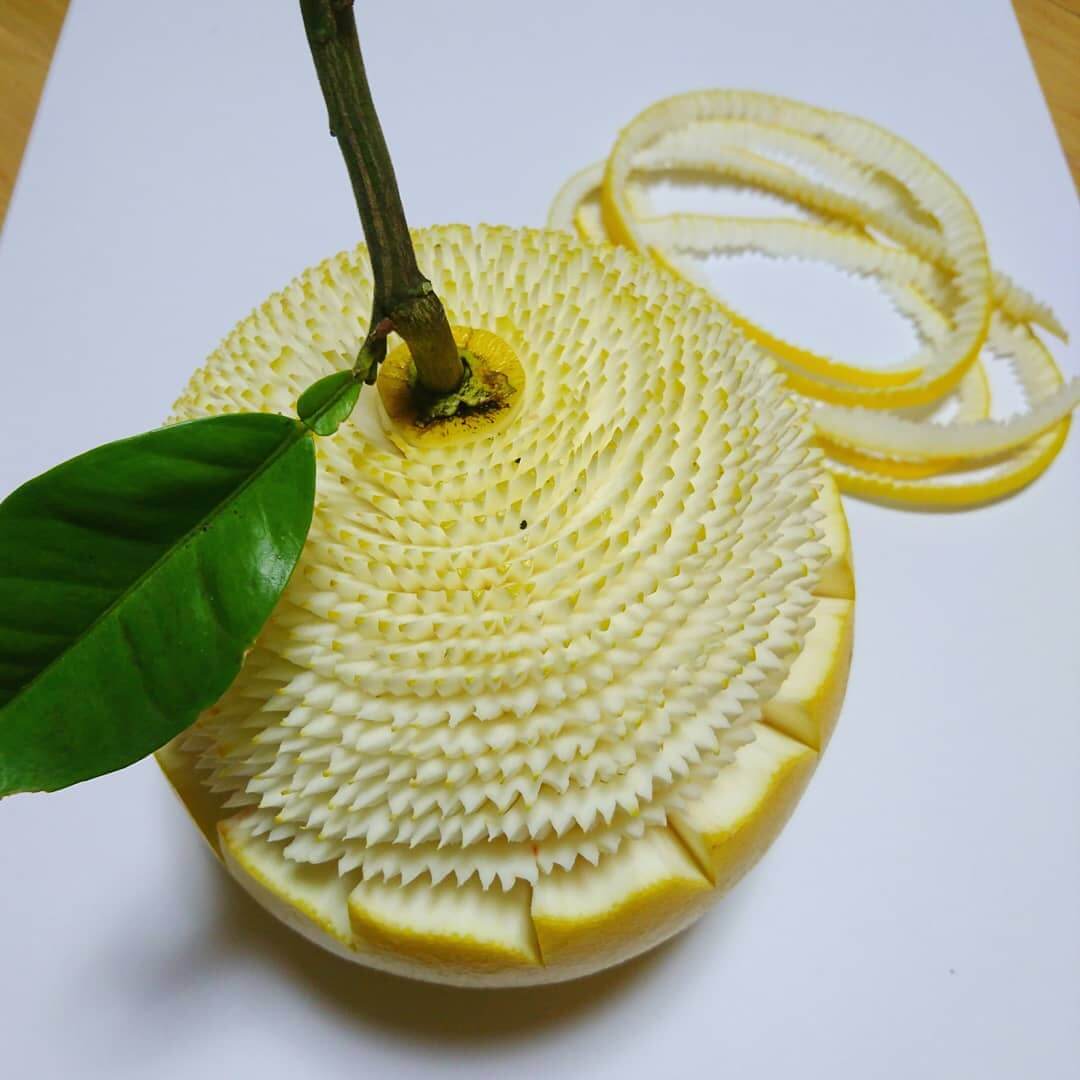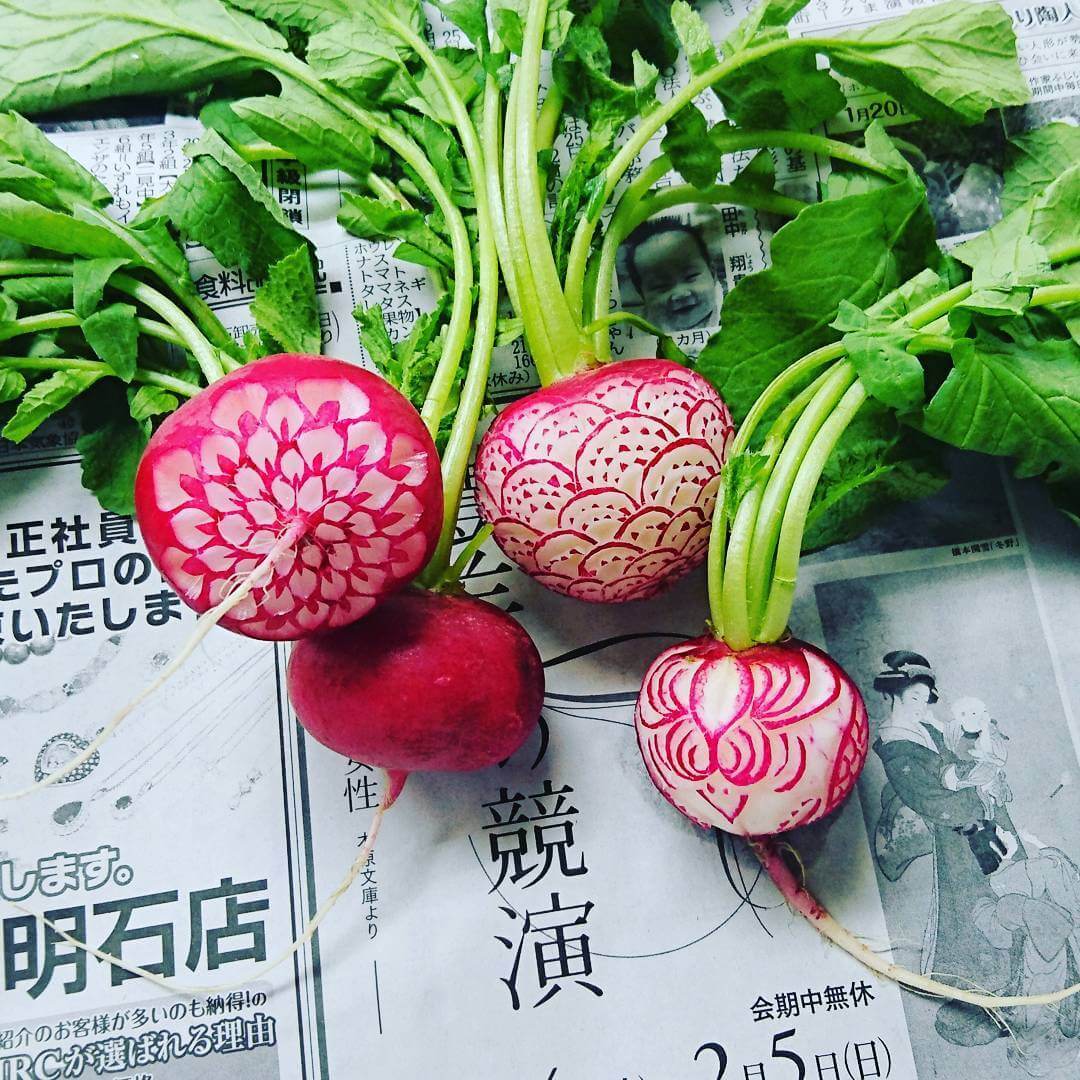Gaku, Master of Fruit and Vegetable Sculpture
The artist revisits the practice of ‘mukimono’ by sculpting patterns and motifs in bananas, avocados and kiwis.

© Gaku
To create his sculptures, Gaku (real name Takehiro Kishimoto) eschews marble and wood in favour of bananas, avocados, kiwis and broccoli.
Armed with a set of knives, he revisits the ancient practice of mukimono (literally ‘peeled thing’ in Japanese).
A race against fruit oxidation
By digging into the flesh of fruits and vegetables and playing with the texture of their skin, he produces complex geometric patterns, often inspired by Japanese traditions.
This art, which is celebrated in Thai culture and became popular in Japan in the 17th century, involves a race against time with every piece: the sculpture has to be finished before the fruit begins to rot. For a long time, mukimono featured flower, bird and dragon motifs, but Gaku draws inspiration from very different sources, as evidenced by his One Piece-aubergine and Dragon Ball Z-banana. This painstaking tradition recalls that of sugar sculpture, amezaiku, very popular in the 19th century.
Gaku’s work can be found on his Instagram account.

© Gaku

© Gaku

© Gaku

© Gaku
TRENDING
-
The Tattoos that Marked the Criminals of the Edo Period
Traditional tattoos were strong signifiers; murderers had head tattoos, while theft might result in an arm tattoo.

-
Paris, Tokyo: Robert Compagnon
With his co-chef and talented wife, Jessica Yang, Robert Compagnon opened one of the top new restaurants in Paris: Le Rigmarole.
 3:31
3:31 -
Chiharu Shiota, Red Threads of the Soul
Last year, more than 660,000 people visited the retrospective 'Chiharu Shiota: The Soul Trembles' exhibit at the Mori Art Museum.

-
‘Before Doubting Others, Doubt Yourself. Who Can Truly Say a Dish Isn’t What It Used to Be?’
In ‘A Non-Conformist’s Guide to Surviving Society’, author Satoshi Ogawa shares his strategies for navigating everyday life.

-
The Story of Sada Yacco, the Geisha who Bewitched Europe
Described by Dazed magazine as the first beauty influencer, she has been restored to her former glory since 2019.





